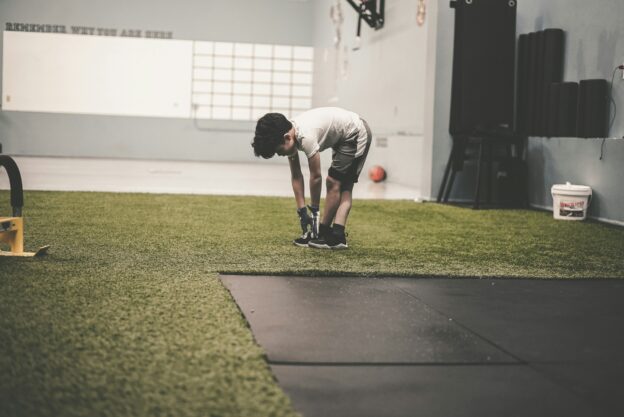
Starting a strength training program as a middle school baseball player can be beneficial for improving performance and preventing injuries. However, it’s important to approach it safely and with proper guidance.
Here’s a step-by-step guide:
- Consult a Coach or Trainer: Before starting any strength training program, it’s essential to consult with a knowledgeable coach or trainer who understands the specific needs and limitations of young athletes. They can provide guidance on appropriate exercises and techniques.
- Focus on Fundamentals: Begin with bodyweight exercises and focus on mastering proper form and technique before adding weights. Fundamental movements such as squats, lunges, push-ups, and pull-ups are excellent starting points.
- Start Light: Start with light weights or resistance bands to avoid injury and allow your body to adapt to the new stress. Gradually increase the intensity and resistance as you become stronger and more proficient in your movements.
- Include Compound Exercises: Compound exercises involve multiple muscle groups and are great for building overall strength and athleticism. Examples include squats, deadlifts, and rows.
- Incorporate Plyometrics: Plyometric exercises – such as box jumps, jump squats, and medicine ball throws – can help improve power and explosiveness, which are essential for many aspects of baseball, including pitching, hitting, and fielding.
- Focus on Core Strength: A strong core is crucial for stability and transferring power from the lower body to the upper body in baseball movements. Incorporate exercises such as planks, Russian twists, and bicycle crunches to strengthen your core.
- Prioritize Recovery: Ensure you have proper rest and recovery between workouts. This includes getting enough sleep, staying hydrated, and eating a balanced diet rich in protein, carbohydrates, and healthy fats to support muscle growth and repair.
- Stay Consistent: Consistency is key to seeing results from any training program. Aim to strength train at least 2-3 times per week, but be mindful that rest is also crucial for progress.
- Listen to Your Body: Pay attention to how your body responds to training. If you experience pain or discomfort beyond normal muscle soreness, it’s essential to rest and consult a coach or healthcare professional to prevent injury.
- Monitor Progress: Keep track of your workouts, including exercises, sets, reps, and weights used. This will help you gauge your progress over time and make adjustments to your training program as needed.
By following these guidelines and working closely with a coach or trainer, a middle school baseball player can safely and effectively start a strength training program to improve their performance on the field.


